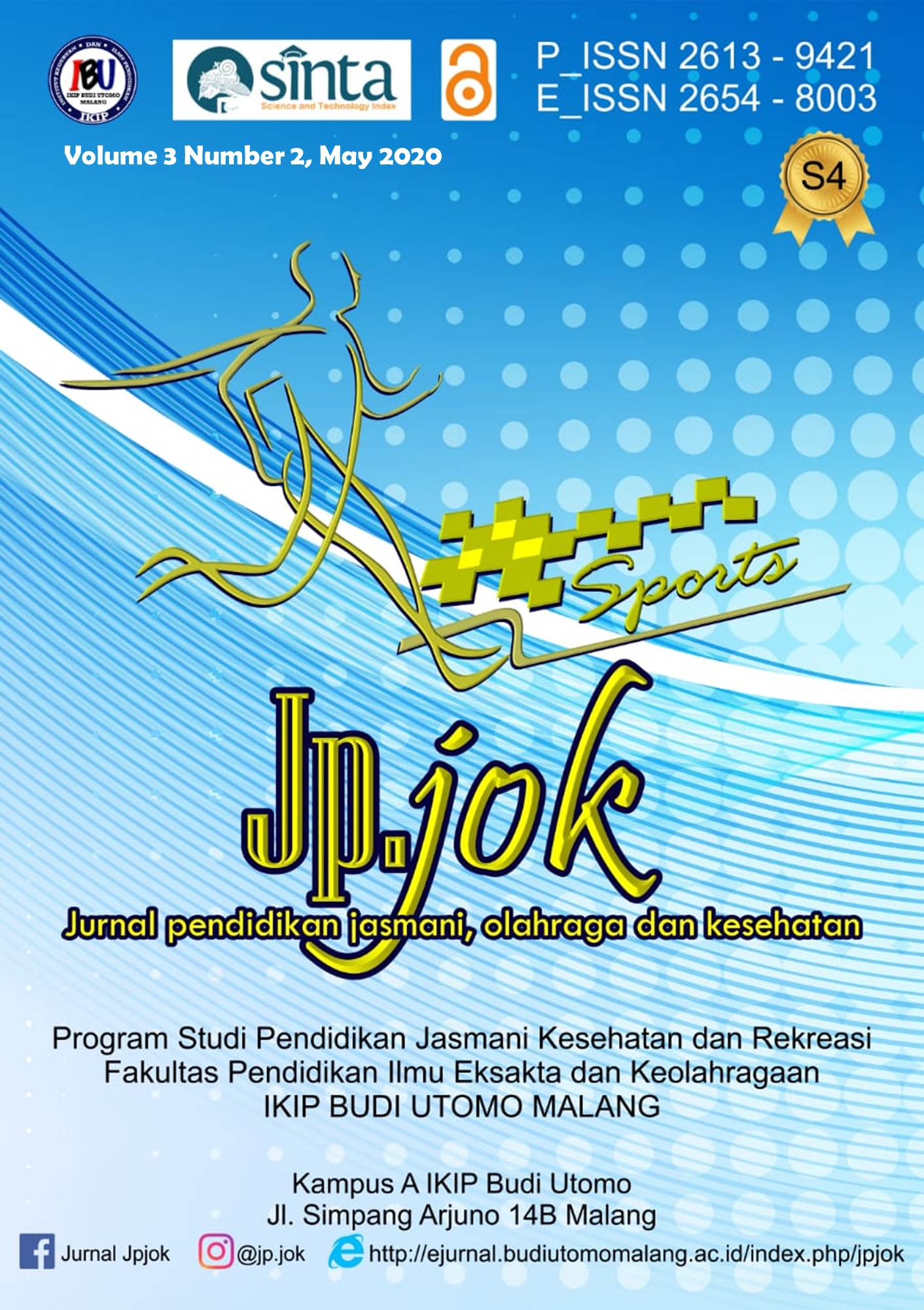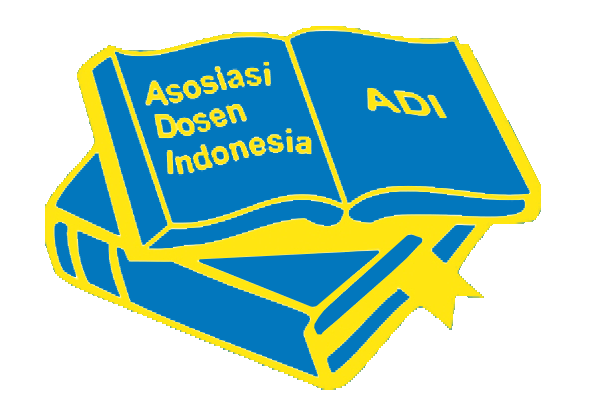Correlation Between Exercise Program With Lung Function And Achievements In Young Adult Swimmer
Abstract
ABSTRACT
This study aims to determine the correlation between exercise programs with lung function and swimming achievements of young adult athletes. Planning an exercise program by considering physiological stimulus encourages the body to adapt and improve lung function and maximize their performance. This is observational research used retrospective cohort study design. Sample in this study was selected based on the required criteria, 31 swimming athletes from the Indonesian Swimming Association of South Sulawesi and Swimming Club of Hasanuddin University, which are divided into two groups based on the presence or absence of the exercise program periodization that was implemented in the last 3 months. Data obtained through questionnaires and direct lung function examination using a spirometer. Based on the results of data analysis, it is known that there is a significant correlation between the exercise program and lung function, including Vital Capacity (VC), Force Vital Capacity (FVC) and Forced Expiratory Volume 1 second (FEV1) where the value of p <0.05. There is also a significant correlation between exercise program and swimming achievement where the value of p <0.01.
References
Akbar, Y. (2013). Kemampuan Daya Tahan Anaerobik Dan Daya Tahan Aerobik Pemain Hoki Putra Universitas Negeri Yogyakarta. Sport, XII(1), 12.
Anggriawan, N. (2015). Peran Fisiologi Olahraga Dalam Menunjang Prestasi. Jurnal Olahraga Prestasi, 11(2), 8–18.
Aspenes, S. T., & Karlsen, T. (2012). Exercise-training Intervention Studies in Competitive Swimming. Sports Medicine, 42(6), 527–543. https://doi.org/10.2165/11630760-000000000-00000
Benck, L. R., Cuttica, M. J., Colangelo, L. A., Sidney, S., Dransfield, M. T., Mannino, D. M., Kalhan, R. (2017). Association between Cardiorespiratory Fitness and Lung Health from Young Adulthood to Middle Ages. American Journal of Respiratory and Critical Care Medicine, 195(9), 1236–1243. https://doi.org/10.1164/rccm.201610-2089OC
Cesar, de C. M., Gonelli, G. P. R., Seber, S., Pellegrinotti, Í. L., & Montebelo, de L. M. L. (2007). Comparison of physiological responses to treadmill walking and running in young men. Gazzetta Medica Italiana, 166(5), 163–167.
Colwin, C. M. (2002). Breakthrough Swimming. Human Kinetics. United States of America: Human Kinetics. Retrieved from https://books.google.co.id/books?id=LPF6DwAAQBAJ&printsec=frontcover#v=onepage&q&f=false
Cordain, L., Tucker, A., Moon, D., & Stager, J. M. (1990). Lung Volumes and Maximal Respiratory Pressures in Collegiate Swimmers and Runners. Research Quarterly for Exercise and Sport, 61(1), 70–74. https://doi.org/10.1080/02701367.1990.10607479
Costa, M. J., Balasekaran, G., Vilas-Boas, J. P., & Barbosa, T. M. (2015). Physiological Adaptations to Training in Competitive Swimming: A Systematic Review. Journal of Human Kinetics, 49(1), 179–194. https://doi.org/10.1515/hukin-2015-0120
Cunningham, G. B. (2010). Demographic dissimilarity and affective reactions to physical activity classes: The moderating effects of diversity beliefs. International Journal of Sport Psychology, 41(4), 387–402.
Dahlan, M. S. (2016). Statistik untuk Kedokteran dan Kesehatan: Deskriptif, Bivariat dan Multivariat (Edisi 6). Jakarta: Epidemiologi Indonesia.
Doherty, M. (1997). Comparison of Lung Volume in Greek Swimmers, Land Based Athletes, and Sedentary Controls using Allometric Scaling. British Journal of Sports Medicine, 31(4), 337–341. https://doi.org/10.1136/bjsm.31.4.337
Durmic, T., Lazovic Popovic, B., Zlatkovic Svenda, M., Djelic, M., Zugic, V., Gavrilovic, T., … Leischik, R. (2017). The Training Type Influence on Male Elite Athletes’ Ventilatory Function. BMJ Open Sport and Exercise Medicine, 3(1), 1–5. https://doi.org/10.1136/bmjsem-2017-000240
Dingley, A. A., Pyne, D. B., Youngson, J., & Burkett, B. (2015). Effectiveness Of A Dry-Land Resistance Training Program On Strength, Power, And Swimming Performance In Paralympic Swimmers. The Journal of Strength & Conditioning Research, 29(3), 619-626.
Kenney, W. L., Wilmore, J. H., & Costill, D. L. (2012). Physiology of Sport and Exercise Fifth Edition. Human Kinetics (5th ed.). United States of America: Human Kinetics. https://doi.org/10.1007/978-981-10-0767-5_35
Kilding, A. E., Brown, S., & McConnell, A. K. (2010). Inspiratory muscle training improves 100 and 200 m swimming performance. European Journal of Applied Physiology, 108(3), 505–511. https://doi.org/10.1007/s00421-009-1228-x
Lazovic-Popovic, B., Zlatkovic-Svenda, M., Durmic, T., Djelic, M., Djordjevic Saranovic, S., & Zugic, V. (2016). Superior Lung Capacity in Swimmers: Some Questions, More Answers! Revista Portuguesa de Pneumologia, 22(3), 151–156. https://doi.org/10.1016/j.rppnen.2015.11.003
Mazic, S., Lazovic, B., Djelic, M., Suzic-Lazic, J., Djordjevic-Saranovic, S., Durmic, T., … Zugic, V. (2015). Respiratory Parameters in Elite Athletes - Does Sport have an Influence? Revista Portuguesa de Pneumologia, 21(4), 192–197. https://doi.org/10.1016/j.rppnen.2014.12.003
Myrianthefs, P., Grammatopoulou, I., Katsoulas, T., & Baltopoulos, G. (2014). Spirometry may Underestimate Airway Obstruction in Professional Greek Athletes. Clinical Respiratory Journal, 8(2), 240–247. https://doi.org/10.1111/crj.12066
Ogita, F. (2005). Energetics in Competitive Swimming and its Application for Training. Revista Portuguesa de Ciências Do Desporto, 6(2), 117–182. https://doi.org/10.1249/MSS.0000000000000330
Patel, K. (2005). Corrective Exercise: A Practical Approach. British Library. London: Hodder Arnold. https://doi.org/10.4324/9780203784082
Shava, I., Kusuma, D. W. Y., & Rustiadi, T. (2017). Latihan Plyometrics dan Panjang Tungkai terhadap Kecepatan Renang Gaya Dada Atlet Renang Sumatera Selatan Abstrak. Physical Education and Sports, 6(3), 266–271.
Tanzila, R. A., & Febriani, R. (2019). Korelasi Kapasitas Vital Paru dengan Prestasi Atlet di Sekolah Olahraga Nasional Sriwijaya Palembang. Syifa’ MEDIKA: Jurnal Kedokteran Dan Kesehatan, 9(2), 79–85. https://doi.org/10.32502/sm.v9i2.1661
Vaithiyanadane, V., Sugapriya, G., Saravanan, A., & Ramachandran, C. (2012). Pulmonary function test in swimmers and non-swimmers- a comparative study. Int J Biol Med Res, 3(2), 1735–1738.
Warganegara, R. K. (2015). The Comparation of Lung Vital Capacity in Various Sport Athlete. Jurnal Majority, 4(2), 96–103. https://doi.org/10.1109/SP.1984.10002
Copyright (c) 2020 Jp.jok (Jurnal Pendidikan Jasmani, Olahraga dan Kesehatan)

This work is licensed under a Creative Commons Attribution-ShareAlike 4.0 International License.
Authors retain copyright and grant the journal right of first publication with the work simultaneously licensed under a Creative Commons Attribution 4.0 International License that allows others to share the work with an acknowledgement of the work's authorship and initial publication in this journal.





.png)






